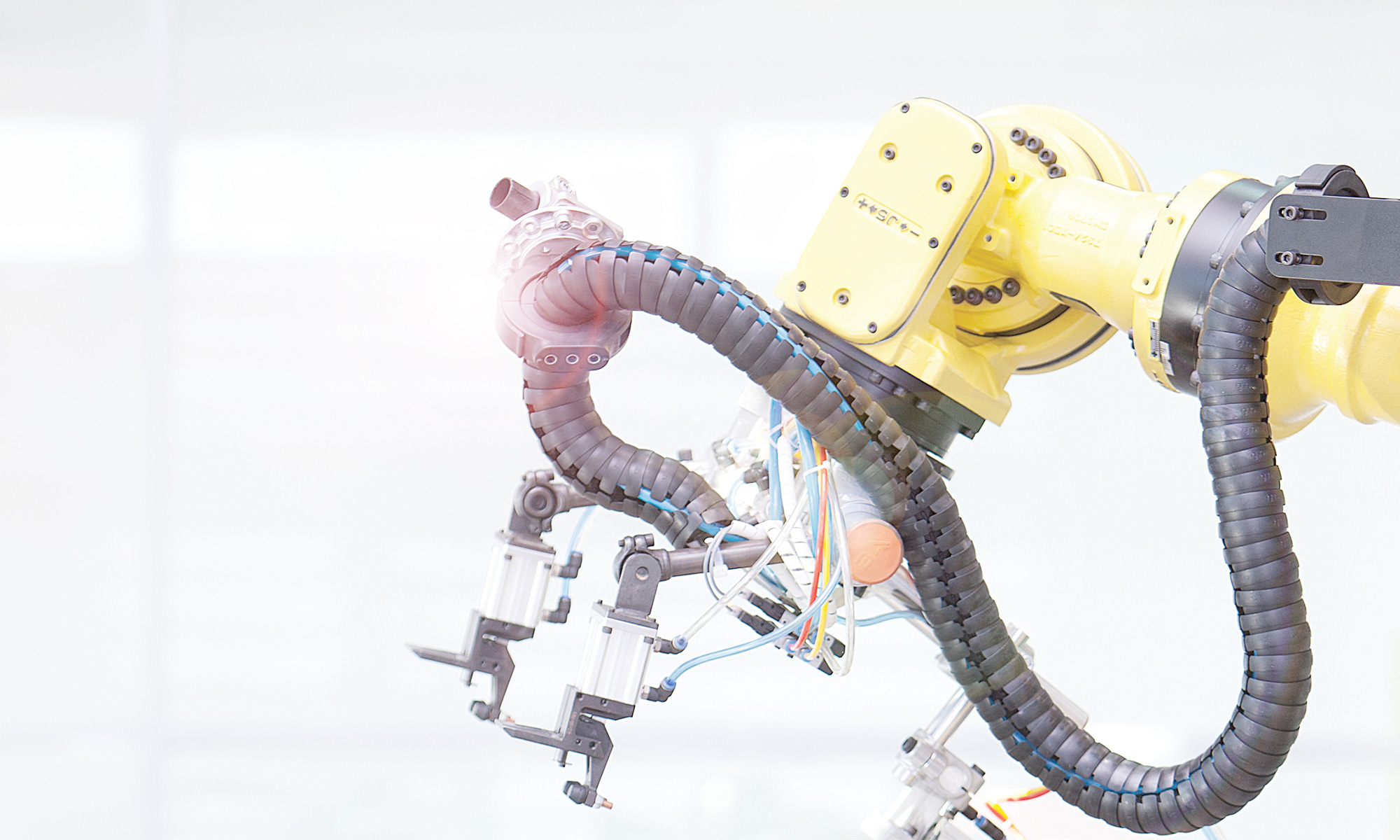Today, engineers are adding more and more sensors to in-die sensing packages in stamping applications. They do so to gain more information and diagnostics from their dies as well as reduce downtime. However, the increased number of sensors also increases the number of electric connections required in the automation system. Previously, the most common technique to accommodate large numbers of sensor in these stamping applications was with large, multi-pin connectors. (Figure 1)

The multi-pin connector approach works in these applications but can create issues, causing unplanned downtime. These problems include:
-
- Increased cost to the system, not only in the hardware itself, but in the wiring labor. Each pin of the connector must be individually wired based on the sensor configuration of each particular die. Depending on the sensor layout of the die, potentially each connector could need to be wired differently internally.
- A shorter life span for the multi-pin connector due to the tough stamping environment. The oil and lubrication fluids constantly spraying on the die can deteriorate the connectors plastic housings. Figure 1 shows the housing starting to come apart. When the connector is unplugged, these devices are not rated for IP67 and dirt, oil, and/or other debris can build up inside the connector.
- Cable damage during typical die change out. Occasionally, users forget to unplug the connectors before pulling the die out and they tear apart the device. If the connector is unplugged and left hanging off the die, it can be run over by a fork truck. Either way, new connectors are required to replace the damaged ones.
- Bent or damaged pins. Being mechanical in nature, the pin and contact points will wear out over time by regular plugging and unplugging of these devices.
- A lack of flexibility. If an additional sensor for the die is required, additional wiring is needed. The new sensor input needs to be wired to a free pin in the connector and a spare pin may not be available.

Inductive couplers (non-contact) are another solution for in-die sensors connecting to an automation system. With inductive couplers, power and data are transferred across an air gap contact free. The system is made up of a base (transmitter) and remote (receiver) units. The base unit is typically mounted to the press itself and the remote unit to the die. As the die is set in place, the remote receives power from the base when aligned and exchanges data over a small air gap.
The remote and base units of an inductive coupler pair are fully encapsulated and typically rated IP67 (use like rated cabling). Because of this high ingress protection rating, the couplers are not affected by coolant, die lubricants, and/or debris in a typical stamping application. Being inherently non-contact, there is no mechanical wear and less unplanned downtime.
When selecting an inductive coupler, there are many considerations, including physical form factors (barrel or block styles) and functionality types (power only, input only, analog, configurable I/O, IO-Link, etc…). IO-Link inductive couplers offer the most flexibility as they allow 32 bytes of bi-direction data and power. With the large data size, there is a lot of room for future expansion of additional sensors.
Adding inductive couplers can be an easy way to save on unexpected downtime due to a bad connector.




